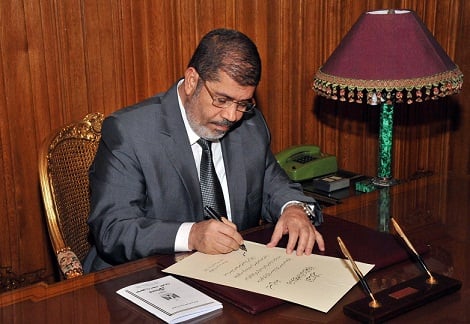CAIRO: The tide of public piety that swept the country in the past few decades was hailed by some social groups as a move towards religiosity, but according to some views, the phenomenon has backfired.
Although today more people adopt the ritualistic aspects of religion, a very small number of Egyptians really cherish the core values of their faith. Such an inconsistency has rendered many people disillusioned with the idea of religiosity altogether.
“A few decades ago less women wore the Islamic headscarf, but people were more religious than today, says Sahar Mohamed, 23, a graduate of the faculty of law who has recently taken off the veil.
Mostafa Khalil, 30, who had witnessed the rise of the religiosity trend in the late 1990s and early 2000s at the American University in Cairo (AUC), echoed the same view. He argued that Egypt has witnessed an unprecedented level of moral decay over the past few decades.
Emad El-Din Ayesha, a sociology professor at AUC, however, believes that there is nothing distinctly Egyptian about the current emphasis on manifestations of public piety.
“Village and crowded neighborhood cultures do not give any room for individualism and privacy, he says, adding that individuals in such cultures are expected to conform to norms and values and to set an example to others by being excessively religious.
But the very values that guided the collective conscience of Egyptian society have changed over the past 40 years, which has impacted how people view dress codes.
The fact that old generations – who found wearing mini- and micro-skirts acceptable – are described by people today as more religious raises many questions about why the acceptable dress code and the general social behavior seem to be going in opposite directions.
Abdallah Shalaby, of Ain Shams University and author of “Religion, Society and the State in Egypt in the last Quarter of the 20th Century, believes that what we witness today is a false religiosity that does not reflect a true adherence to religion.
“The current religiosity trend is devoid of any ethical content, which is clearly manifested in the rising crime and corruption rates, he told Daily News Egypt.
As such, Shalaby does not lament the disappearance of some manifestations of public piety.
Modern lifestyle
The lifestyle of Egyptians has witnessed many changes over the past 10 years, which can be attributed to what some call a “retail revolution. With the steady growth of the luxury business in Egypt, Egyptians now have access to a wide range of fashion designs and leisure activities.
Egypt’s integration into the international capitalist system, according to Shalaby, has resulted in an extravagant consumer culture, particularly among the country’s upper classes.
According to some views, the increasingly modern – and sometimes lavish – lifestyle of some social segments has reversed the religiosity phenomenon among Egypt’s affluent youth.
“I feel that hijab does not fit in some places and that it’s outdated, says Aboulazm.
Despite the attempts of modern day preachers to help young people integrate religion into their modern lifestyles, it seems that their discourse is not up to the challenges of globalization that is making religious youth increasingly feel out of place.
“The country is inundated by a wave of Westernization that has totally shifted young people’s religious orientations, Nenna Yusuf, a 25-year-old software engineer who graduated in 2007 from a private university, told Daily News Egypt, adding that younger generations seem to be less conservative.
Although her religious views have not changed, Yusuf, who still wears the hijab, believes that she is less religious now.
Divided society?
Interestingly, young men and women who were keen to display religious symbols a decade ago are suddenly undermining their significance.
“The outer appearance does not affect one’s relationship with God. Looking modest is important, but focusing so much on the hijab can be counterproductive, 23-year-old Sahar Mohamed said.
While some people believe that religiosity is losing ground to an increasingly modern lifestyle, others argue that observable changes, such as removing the hijab, cannot be used as criteria against which religiosity is measured.
“I’m the same person; I still pray and read Quran even after removing the veil, says Aboulazm, who still believes that wearing the Islamic scarf is obligatory on Muslim women.
Mohamed also considers wearing hijab an Islamic duty, but she believes that there are many other duties that should be given equal attention.
Khalil believes that the tide of public piety of a decade ago and the current shift are equally insignificant because they did not touch the core of religion.
Paradoxically, against the backdrop of the “dehijabization phenomenon, a significant number of Egyptian women are fighting a battle for the right to wear niqab (face veil) in classrooms and university hostels.
Although Shalaby says that most of his female students at Ain Shams University wear the Islamic headscarf, students at the A-class university of AUC argue that they can notice fewer religious symbols on campus.
“The number of students abiding by the Islamic dress code is much smaller now, and there are less religious-oriented activities on campus, says Tamer Shawky, 29, a graduate of AUC, who is pursuing a Masters Degree at the same university.
Shawky describes how less people pray in the on-campus mosque.
Khalil, among others, thinks that the upper classes on the one hand and the lower classes on the other are moving towards the opposite ends of the religious spectrum.
